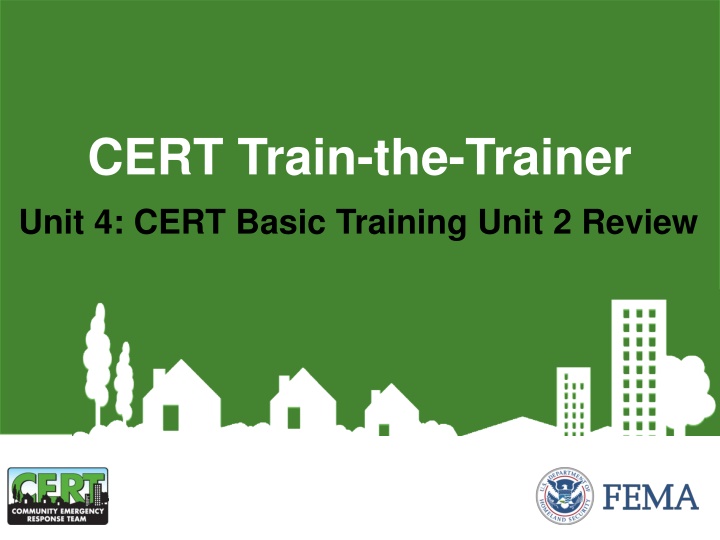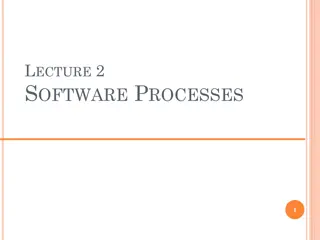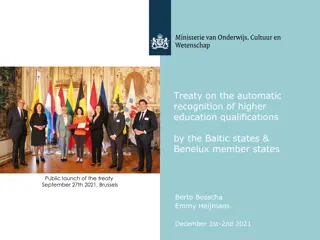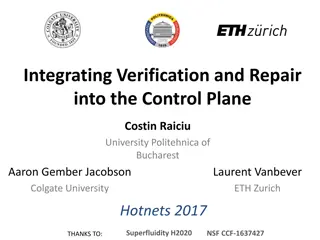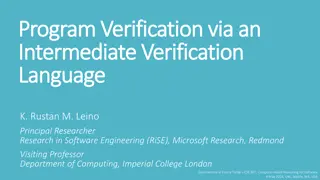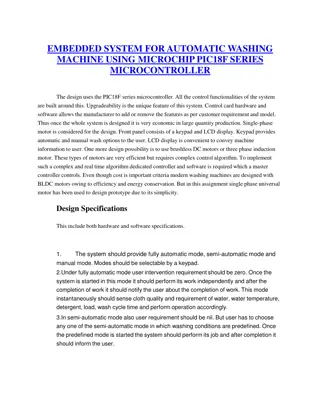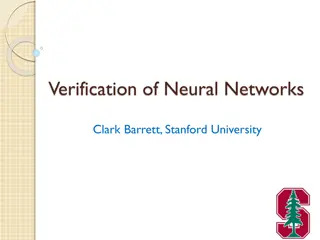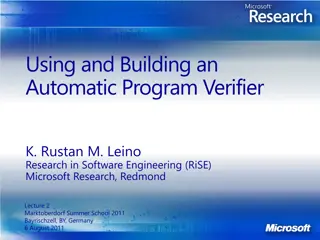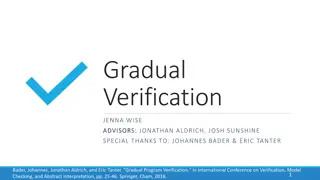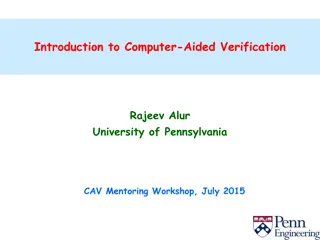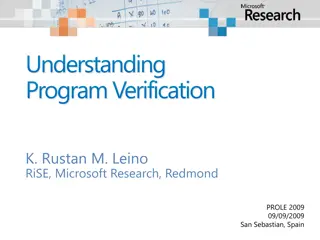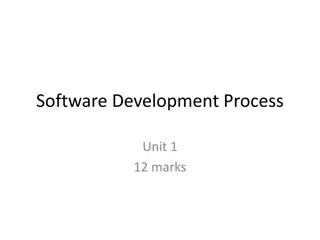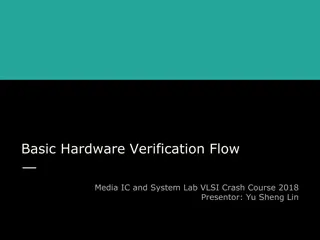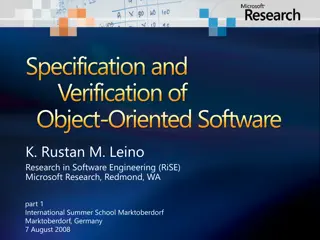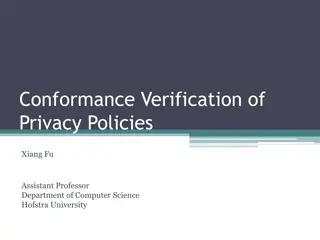Automatic Software Verification
This content delves into the realm of automatic software verification, exploring key concepts such as program properties, behavior analysis, exploits like buffer overruns, and counterexample proofs. Discussions include course requirements, lecture summaries, and the importance of verifying software to prevent vulnerabilities. Learn about exploit scenarios, inspired by other courses, and the ubiquitous nature of software in our technology-driven world.
Download Presentation

Please find below an Image/Link to download the presentation.
The content on the website is provided AS IS for your information and personal use only. It may not be sold, licensed, or shared on other websites without obtaining consent from the author.If you encounter any issues during the download, it is possible that the publisher has removed the file from their server.
You are allowed to download the files provided on this website for personal or commercial use, subject to the condition that they are used lawfully. All files are the property of their respective owners.
The content on the website is provided AS IS for your information and personal use only. It may not be sold, licensed, or shared on other websites without obtaining consent from the author.
E N D
Presentation Transcript
CERT Train-the-Trainer Unit 4: CERT Basic Training Unit 2 Review
What Do You Think? What is the purpose of CERT Basic Training Unit 2? PM 4-2 CERT Train-the-Trainer Unit 4: Basic Training Unit 2 Review 4-1
The Purpose of Unit 2 What is the purpose of CERT Basic Training Unit 2? To review: CERT organization CERT mobilization On-scene size-up Rescuer safety protocols Documentation tools PM 4-2 CERT Train-the-Trainer Unit 4: Basic Training Unit 2 Review 4-2
What Do You Think? What are the learning objectives for this unit? (Unit 2)( PM 4-2 CERT Train-the-Trainer Unit 4: Basic Training Unit 2 Review 4-3
What Do You Think? Learning Objectives (Unit 2) What are the learning objectives for this unit? 1. To describe the CERT organizational structure and know how to use CERT standard documents 2. To explain the Incident Command System (ICS) and show how CERT runs within this system 3. To describe the nine-step on-scene size-up process PM 4-2 CERT Train-the-Trainer Unit 4: Basic Training Unit 2 Review 4-4
Key Topics (Unit 4) Give brief overview of unit Help participants understand concept of ICS Teach participants how a CERT mobilizes for a disaster Introduce the basics of rescuer safety Go over the CERT on-scene size-up process Stress importance of documentation PM 4-2 CERT Train-the-Trainer Unit 4: Basic Training Unit 2 Review 4-5
Hands-on Activities (Unit 4) ICS Functions (also a great exercise to build other activities from) PM 4-3 CERT Train-the-Trainer Unit 4: Basic Training Unit 2 Review 4-6
Tips for Teaching Unit 2 Program Manager is great resource Be sure to teach this unit slowly Allow plenty of time for discussion Tower exercise can be woven into unit Think about whether to include basic crime scene protocols If so, make plans to give that information Stress that with ICS you only use what you need PM 4-3 CERT Train-the-Trainer Unit 4: Basic Training Unit 2 Review 4-7
More Tips (Tips for Teaching Unit 2, continued) Before teaching this unit, figure out which documentation forms your CERTs will use Add forms into Instructor Guide and Participant Manual for this unit Include blank form and example of same form with information filled in ahead of time CERT Forms do exist and can be useful FEMA ICS Forms allow for better integration with local agencies, but require additional training (at no cost) PM 4-3 CERT Train-the-Trainer Unit 4: Basic Training Unit 2 Review 4-8
Connection to Course (Unit 4) Gives framework for all CERT functions covered in CERT Basic Training Units 3-7 Sets a standard of teamwork Explains what CERT volunteers need to do to make sure their training works PM 4-4 CERT Train-the-Trainer Unit 4: Basic Training Unit 2 Review 4-9
Getting More from the Unit(Unit 4) FEMA Independent Study IS-100 IS-700 IS-200 IS-800 PM 4-4 CERT Train-the-Trainer Unit 4: Basic Training Unit 2 Review 4-9
